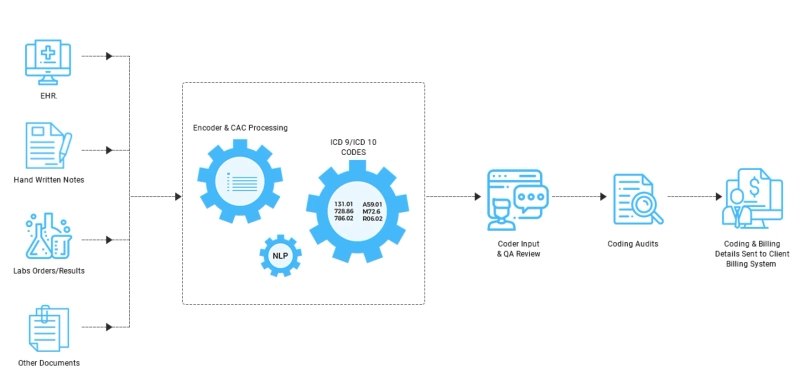Health care is now transforming from a payment system that is based on the kind of services given to a payment system that is based on the quality of those services provided, i.e. from a fee-based service to a value-based service. Healthcare reimbursement methods now prioritize cost-effective decisions that do not hinder the quality of patient treatment. This is followed by medical billing and coding procedures, which aids in getting reimbursed faster by delivering proper insurance claims the first time itself. These two medical terms are often considered to be a single procedure because both occupations are responsible for the translation of medical data into standardized codes in order to convey vital medical records between parties. Let us first understand that medical billing is a procedure, and medical coding is a tool used to effortlessly complete the procedure with the help of the following fundamentals: Difference between Medical Billing & Medical Coding: Medical billing is the process of managing a patient\'s data through billing software, monitoring invoices and denied claims, and verifying the accuracy of medical codes. While Medical Coding solution focuses on patient medical records in order to ensure that payment correctly represents the value of medical treatment delivered to the patient by using the codes specified in CPT, HCPCS, and ICD-10 CM standardized medical coding protocols. Medical coding is a Tool: Medical coders examine the patient\'s medical record to collect information about the patient\'s health, the doctor\'s evaluation, a treatment plan, and any procedures performed on the patient during the course of treatment and then convert that information into a set of codes that comprise an important component of the medical claim. Automated Medical Coding system: According to a recent report, the area of medical billing and coding has grown by 25% in the last few years. As we transform from a volume-based to a value-based medical environment, implementation of Modern medical coding software, such as automated medical coding systems, is focusing on medical coding solutions which can replace traditional, paper-based coding techniques. It reduces manual labor and boosts staff efficiency by promoting accurate and efficient coding in the ambulatory health care sector segments. Coding Audits: The coding audit system assists you in streamlining the HIPAA-compliant audit process with HIM-level reporting, ensuring coder compliance with new regulatory requirements to reduce risk, and using industry standards and best practices to improve performance. The automatic coding audit feature in clinical coding solutions reduces risk and ensures that proper payments are received. A thorough grasp of medical insurance, the claims process, the appeals process, and the impact on revenue provides the medical biller and medical coder with the information required to optimize financial results. Nevertheless, with automated medical coding solutions software, one can easily access medical codes for inspection, verification, and application based on clinical evidence given by practitioners using integrated CD-10, CPT, and CDT coding data. Conclusion: Medical billing and coding solution connect the clinical and business sides of healthcare. Although their job tasks may overlap, especially in small organizations, each performs a distinct function in the workplace. This significantly reduces the time it takes to pay a claim. That is why it is critical to collaborate with medical billing and medical coding specialists individually.Automated Medical Code Generation:
Top 5 Fundamentals of Medical Billing and Medical Coding System.


